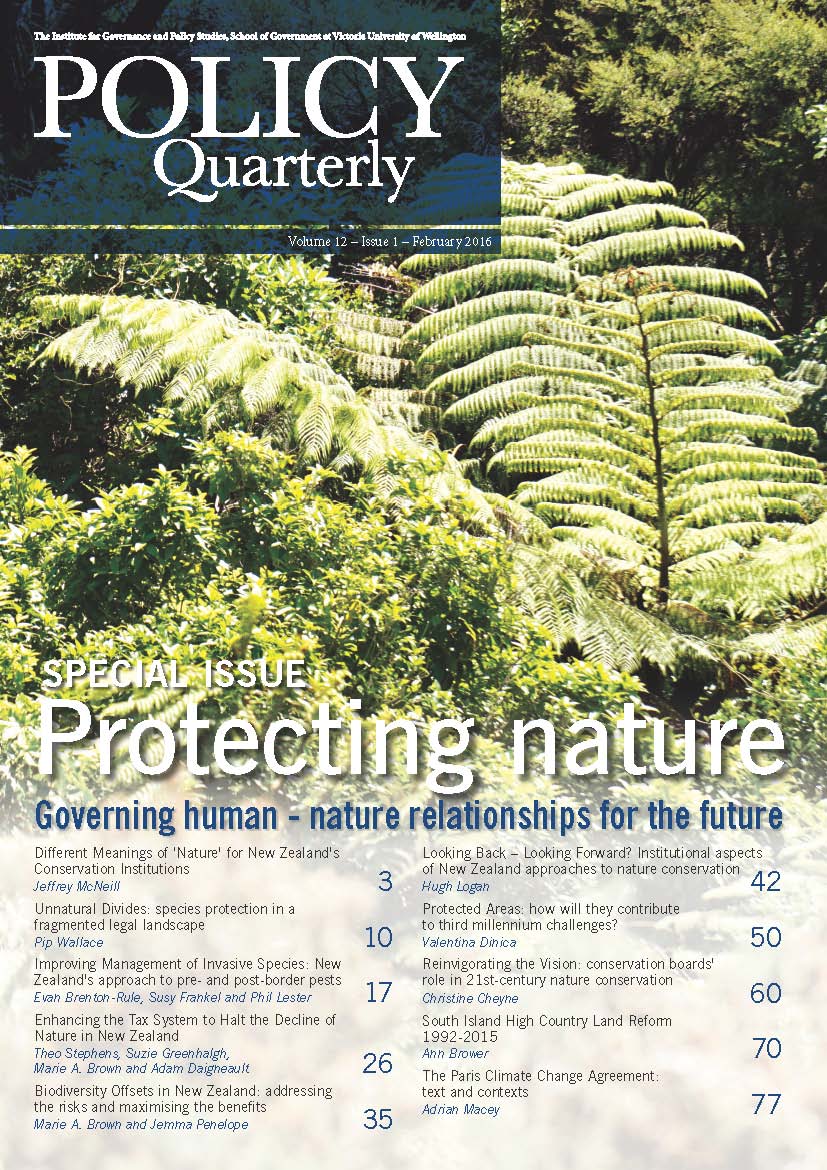Biodiversity offsets in New Zealand: addressing the risks and maximising the benefits
DOI:
https://doi.org/10.26686/pq.v12i1.4580Keywords:
economic development and environmental protection, internalising environmental costs, safeguard biodiversity, Department of Conservation (DOC), RMA, Conservation Act, Environmental Protection AuthorityAbstract
Biodiversity offsets are proliferating globally, and are commonly offered or required in a development context to address residual impacts on biodiversity. Regulatory requirements for mitigating or offsetting ecological harm are now commonplace, with more than 60 countries having introduced relevant policies (ten Kate and Crowe, 2014; Madsen, Carroll and Moore Brands, 2010). Biodiversity offsets are commonly framed in policy as opportunities to reconcile the competing interests of economic development and environmental protection, and are also viewed as a crucial means of internalising environmental costs and achieving conservation goals. On the other hand, a mismatch in certainty between the guaranteed losses from development activity in exchange for uncertain gains for the public interest commonly offered or required in a development context to address residual impacts on biodiversity. Regulatory requirements for mitigating or offsetting ecological harm are now commonplace, with more than 60 countries having introduced relevant policies (ten Kate and Crowe, 2014; Madsen, Carroll and Moore Brands, 2010). Biodiversity offsets are commonly framed in policy as opportunities to reconcile the competing interests of economic development and environmental protection, and are also viewed as a crucial means of internalising environmental costs and achieving conservation goals. On the other hand, a mismatch in certainty between the guaranteed losses from development activity in exchange for uncertain gains for the public interest in nature creates significant risk, exacerbated by often poor compliance, poor ecological outcomes and often superficial analysis of exchanges (Pilgrim et al., 2013).
Downloads
Downloads
Published
Issue
Section
License
Permission: In the interest of promoting debate and wider dissemination, the IGPS encourages use of all or part of the articles appearing in PQ, where there is no element of commercial gain. Appropriate acknowledgement of both author and source should be made in all cases. Please direct requests for permission to reprint articles from this publication to Policy-Quarterly@vuw.ac.nz.



